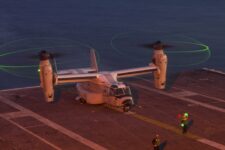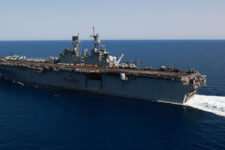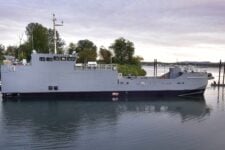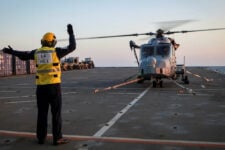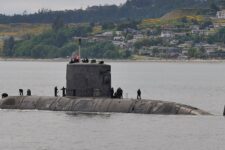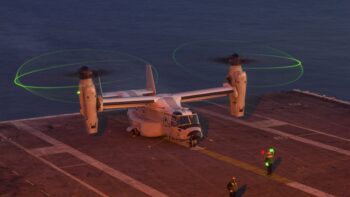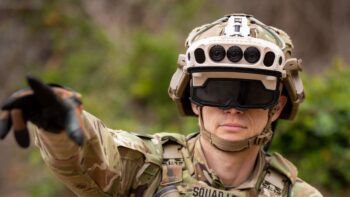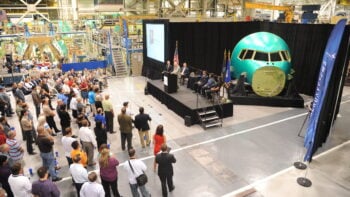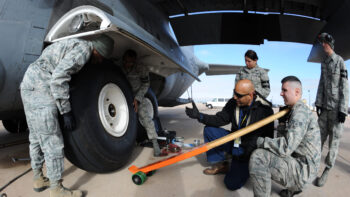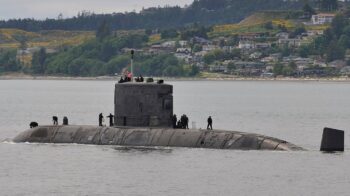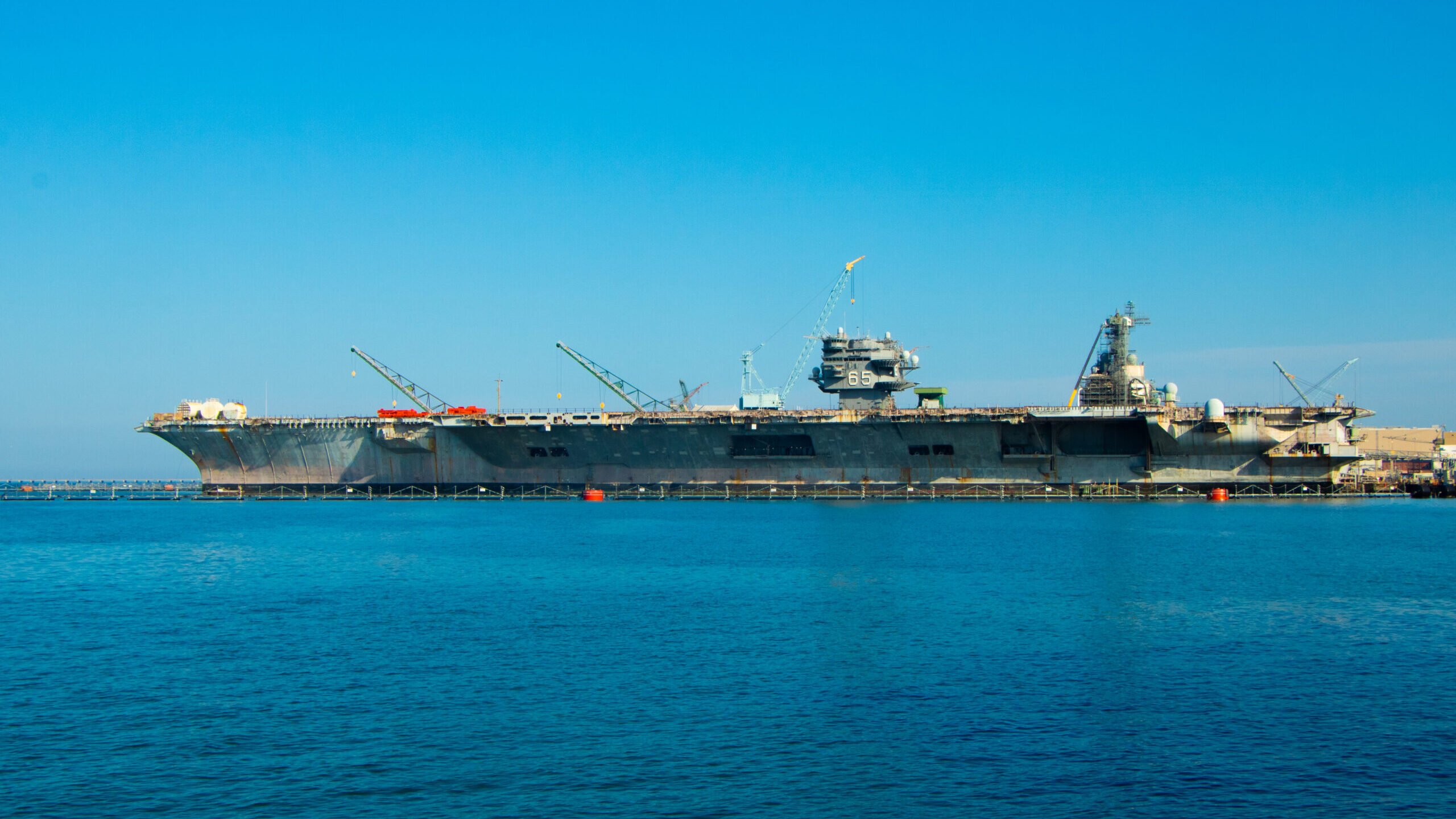
The former USS Enterprise (CVN-65) sits in port at Newport News Shipbuilding awaiting final inactivation. (Justin Katz/Breaking Defense)
WASHINGTON — A senior US Navy official today confirmed the existence of a new office focused on nuclear carrier inactivation and dismantlement, as first reported by Breaking Defense, and emphasized that it has its work cut out for it.
Rear Adm. James Downey, special assistant to the service’s acquisition executive, said the new office was established within the past two to three months, following the Navy’s formal decision on its plan to dismantle the former nuclear-powered aircraft carrier Enterprise (CVN-65).
“That [office] will take on the final disposal of Enterprise, but it’s setting it up for Nimitz and then for Ford,” Downey told attendees Wednesday at an event hosted by the American Society of Naval Engineers. “So in those programs of record … we just stood up a program office that has about 100 years of work. … If we execute those programs of record and they perform to the schedule, [the office] has a century of work ahead of them.”
RELATED: Uncharted Waters: Navy Navigating First-Ever Dismantling Of Nuclear-Powered Carrier
Although the Navy had a pre-existing program office tasked with managing its fleet of inactivated ships, Downey said that team traditionally has dealt with non-nuclear vessels and already has its hands full managing dozens of ships globally that are awaiting to be disposed, to be sold to foreign militaries or to be cannibalized for useful parts. The tasks associated with properly disposing of the Enterprise, the world’s first nuclear-powered aircraft carrier, and subsequently the Nimitz and Ford classes, represent billions of dollars in additional work, he said.
The admiral also said the Navy’s capacity to complete the pipeline of work is a challenge.
“The point of a new program office and acquisition strategy is do we think we have untapped capacity right now looking at our shipbuilding [programs]?” he said. “In general, you could conclude with COVID impacts on workforce [and] not all of our programs being on schedule, no, that we do not. So, we need to do some things a bit differently.”
Public Navy documents indicate the service has elected — also for the first time — to tap commercial industry for the dismantlement of a nuclear-powered ship. That decision was partially driven by a conclusion that the public shipyards must focus on maintaining the in-service fleet. Although cautious not to “forecast” future contracts, Downey said “maybe there’s other opportunities in the future” for commercial industry to get involved with the dismantlement process.
“But we haven’t accomplished the first one. And as they [the program office] do that, they’re going to move into a different class [of carriers],” he said. “So we don’t want to get this wrong. … We’re going in with the best approach we believe is feasible at this point.”
V-22 Osprey operating with ‘limited envelope,’ required to stay near airfields
Despite all three US V-22 variants flying, they remain under safety restrictions, according to service acquisition officials.
